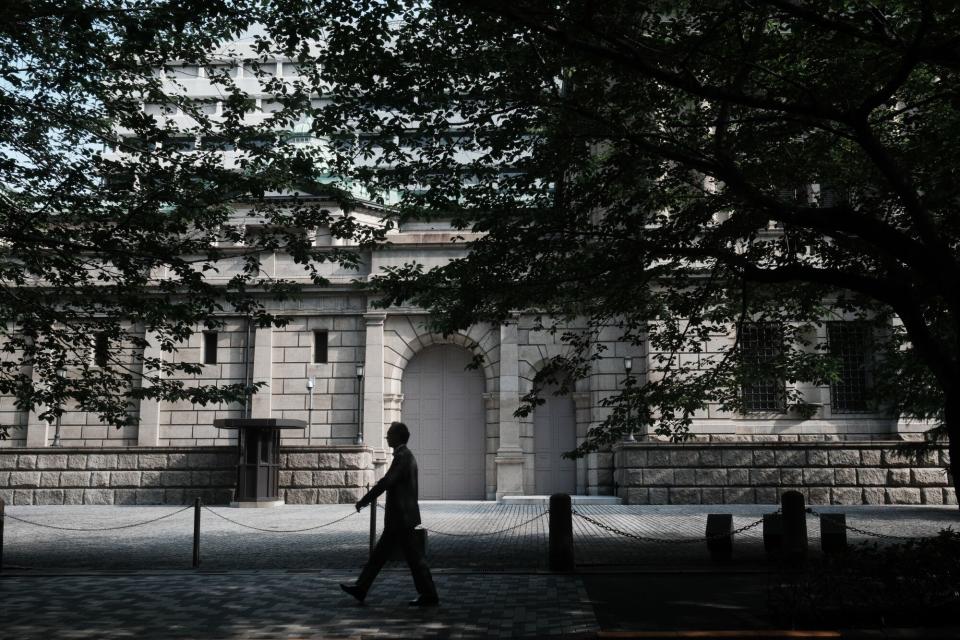Yen Traders Game Plan for Nail-Biting Run Into BOJ Decision
(Bloomberg) -- Currency traders face a long and nail-biting wait this month until the Bank of Japan’s policy decision on July 31, when a potential interest-rate hike and cut to bond purchases may finally bring some relief to the embattled yen.
Most Read from Bloomberg
Kamala Harris Is Having a Surprise Resurgence as Biden’s Campaign Unravels
Singapore Couples Are Marrying Earlier to Buy Homes, Leading Some to Regret
Biden’s Fourth of July Shrouded by Pressure to Drop 2024 Bid
Newsom Shocks California Politics by Scrapping Crime Measure
It’s plumbed new lows versus the dollar four times since late June, piling pressure on authorities in Tokyo to wade back into the market to stem the losses. Potential trigger points for sharp moves and official intervention abound, from the drum roll of economic data to political turmoil that’s struck Europe and the US.
Below is a look at key events and market levels that look set to shape yen trading this month.
Data minefield
Dozens of economic data points, from US nonfarm payrolls later Friday to the Federal Reserve’s preferred inflation measure — the PCE deflator — on July 26 will provide cues for traders. While the most recent PCE reading supported the case for a Fed rate cut later this year, it failed to staunch declines in the yen.
In between these jobs and inflation releases, traders will need to position for the consumer price index on July 11, producer prices the following day, retail sales on the 16th, then home sales and the purchasing managers index about a week before the BOJ decision.
Japanese data will also be in focus, including wages on Monday, national inflation on July 19, and Tokyo CPI on July 26. Price growth in Tokyo is a leading indicator of the national trend and will be closely scrutinized to check it doesn’t provide an obstacle for BOJ Governor Kazuo Ueda to hike rates on July 31.
Intervention flashpoints
Any acceleration in declines, which have seen the yen slump about 13% against the dollar this year to a 38-year low, may bring a repeat of the record ¥9.8 trillion ($61 billion) on intervention seen in April-May.
“Intervention is not based on levels, but rather on a sense of the speed with which the yen is depreciating,” said Takuya Kanda, head of research at Gaitame.com Research Institute. He doesn’t expect intervention until the yen is close to 165 against the dollar.
But there is no consensus in the market. Daisaku Ueno, chief foreign-exchange strategist at Mitsubishi UFJ Morgan Stanley Securities Co., flagged 164.50 and 169.07 versus the dollar as key areas at which intervention may take place. “Then the next level would be 170, but I don’t think they will wait that long,” he said.
For Marito Ueda, head of the market research department at SBI Liquidity Market Co., if the authorities want to stop the yen weakening past 165, “the intervention line will be between 162 and 165.”
The nation’s top currency official, Masato Kanda, has offered multiple clues over what the government considers excessive or unusual speed, but no one key gauge. Among them he has cited a 4% drop in the yen against the dollar over two weeks.
Going beyond his words and looking at the interventions since autumn 2022, on each occasion the currency has moved more than 2 yen within 24 hours. That offers a handy threshold of minimum movement before authorities will consider buying yen based on levels actually seen.
The yen buying campaigns have been spaced out, too. The September 2022 intervention took place with the currency heading to 146, the salvos in October that year came with the yen just below 152 and the entry into the market this spring was seen around the mid 159 range and just below 158.
That suggests the finance ministry may be reluctant to enter the market again until a similar span of at least 6 yen has been reached, and implies no action before at least 164.
Adding to the uncertainty for traders, Kanda will step down at the end of July, making way for a new currency czar. “Since the date of Kanda’s retirement coincides with the BOJ meeting, it would be difficult to intervene on the same day,” said SBI’s Ueda.
Japan may also want to wait for the Fed’s policy meeting to conclude later on the 31st before taking any action. Chair Jerome Powell’s messaging on US rates could erase a premature move by Japanese authorities, or alternatively remove the need for action at all.
Political risk
While in other times the yen might have been viewed as a good safe-haven bet in the event of political uncertainty, it seems to have lost that mantle recently as votes in France and the UK take place.
Doubts swirling around whether Joe Biden should push ahead as democratic nominee in November’s US presidential election have increased bets on Donald Trump being re-elected and bolstered the dollar.
Still, for traders seeking bright spots among all the risks to the yen this month, July has proved to be one of the better periods for the currency in recent times, with average gains of more than 1% over the past five years.
--With assistance from Daisuke Sakai, Saburo Funabiki and Masaki Kondo.
Most Read from Bloomberg Businessweek
Dragons and Sex Are Now a $610 Million Business Sweeping Publishing
For Tesla, a Smaller Drop in Sales Is Something to Celebrate
The Fried Chicken Sandwich Wars Are More Cutthroat Than Ever Before
©2024 Bloomberg L.P.

 Yahoo Finance
Yahoo Finance 



